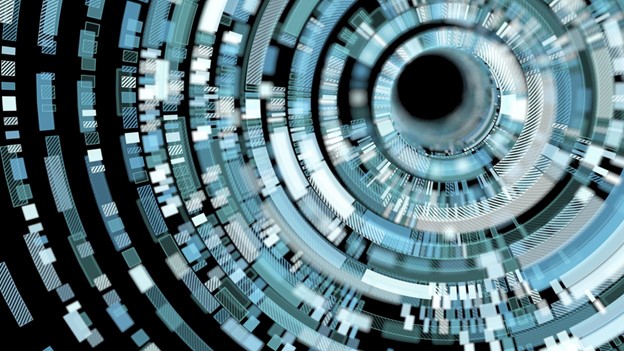I teach some college classes and have been working on some material to add to my Management Information Systems class. The topic I have been researching is The Internet of Things (IoT) which is one of the top 5 hottest trends in IT right now (along with Cloud, Big Data, BYOD and Mobile Apps).
The idea of a globally interconnected universe of devices, objects and things in general emerged with RFID technology, and this concept has considerably been extended considerably to the current vision that envisages a plethora of heterogeneous objects interacting with the physical environment. Wikipedia says the term “Internet of Things” was first used by Kevin Ashton in 1999.
 His thinking behind the concept was this:
His thinking behind the concept was this:
“Today computers—and, therefore, the Internet—are almost wholly dependent on human beings for information. Nearly all of the roughly 50 petabytes (a petabyte is 1,024 terabytes) of data available on the Internet were first captured and created by human beings—by typing, pressing a record button, taking a digital picture or scanning a barcode. Conventional diagrams of the Internet … leave out the most numerous and important routers of all—people. The problem is, people have limited time, attention and accuracy—all of which means they are not very good at capturing data about things in the real world. And that’s a big deal. We’re physical, and so is our environment … You can’t eat bits, burn them to stay warm or put them in your gas tank. Ideas and information are important, but things matter much more. Yet today’s information technology is so dependent on data originated by people that our computers know more about ideas than things. If we had computers that knew everything there was to know about things—using data they gathered without any help from us—we would be able to track and count everything, and greatly reduce waste, loss and cost. We would know when things needed replacing, repairing or recalling, and whether they were fresh or past their best. The Internet of Things has the potential to change the world, just as the Internet did. Maybe even more so.”
I started thinking about all of these devices becoming smart with embedded processors and RFID chips making them addressable and therefore and Internet enabled. The research says the systems behind these devices will have an event-driven architecture and the geographic dimensions of the device will be critical. A lot of the material about IoT that I read on the web talks about how these smart devices can take your payments from your phone (i.e., gas pumps) and alert you to situations (i.e., home system controls). Because these devices are Internet enabled and can monitor themselves as well as their environment they can talk to other devices. The vending machine is a device that is used to demonstrate the taking of payments and knowing the beverage preferences of a user. But it can also monitor its own inventory and traffic (supply and demand).
Let’s extend the concept even further. I envision these devices creating POs for themselves and sending them directly to their supplies vendor. Remember that a properly constructed GLN (Global Location Number) can identify finite areas such as a receiving dock or a single vending machine. EDI formats fit right in to these scenarios. OK, the message will probably be transmitted via web services and be in an XML format, but we are working with those types of messages already so I see communicating with the IoT world as a natural extension of what we do already. I would love to hear your thoughts on this and to know if anyone is doing this already. Brave New World, here we come!
Learn more about how to thrive in a world full of supply chain challenges in our free eBook: Supply Chain Insights








